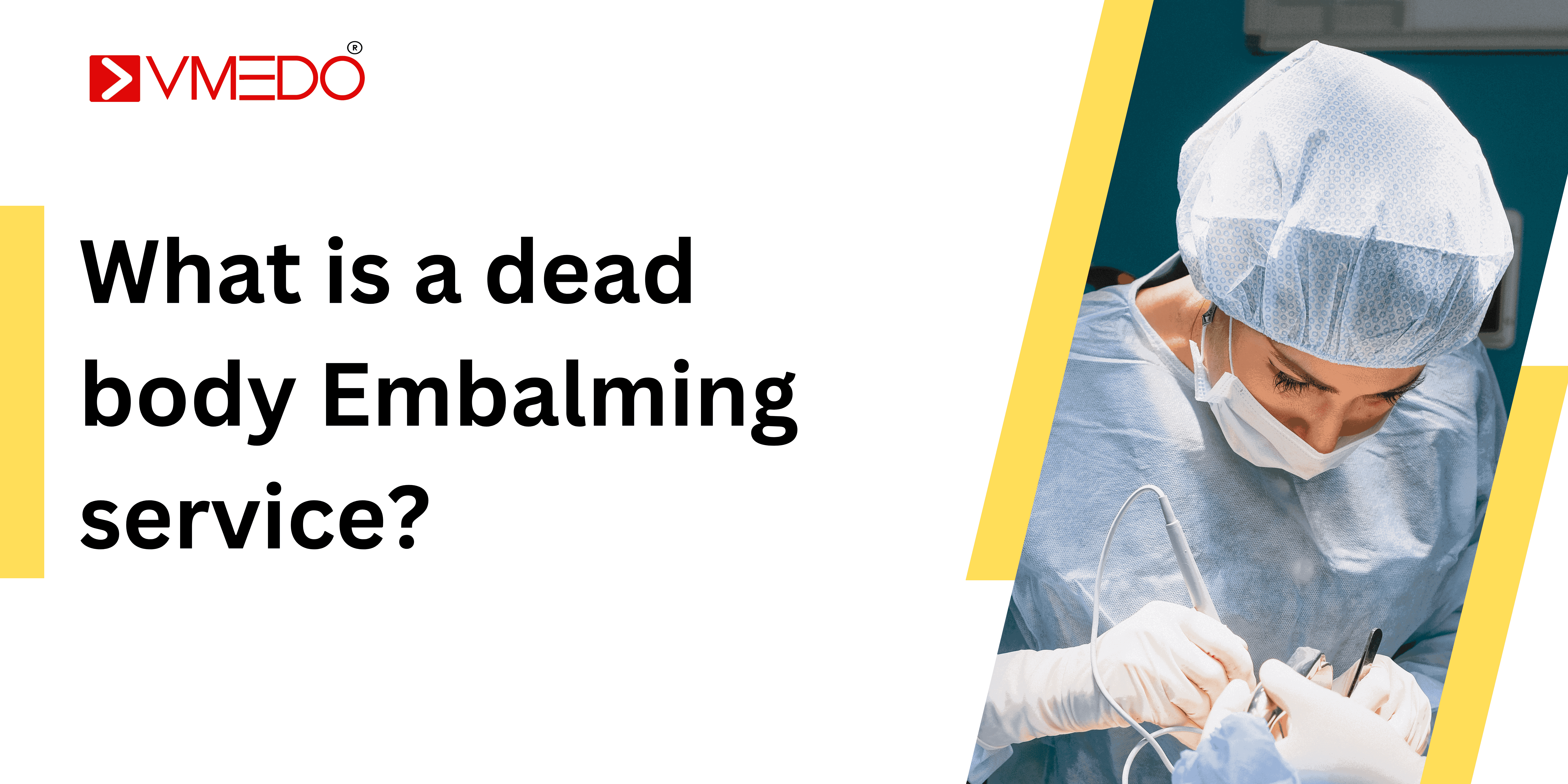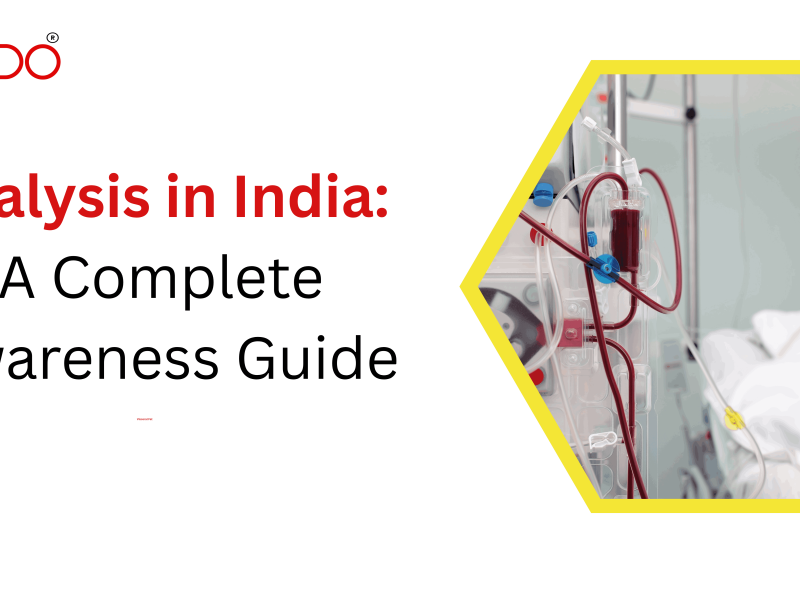A dead body embalming service is a professional service provided by funeral homes or mortuaries to preserve a deceased person’s body. Embalming involves a series of procedures designed to delay the natural decomposition process and prepare the body for viewing, funeral services, or transport. At VMEDO, we understand the importance of ensuring a smooth and respectful process for transporting your loved one’s remains by air or train. When you request dead body transportation by air or train through us, we take care of obtaining the necessary embalming certificate. This allows you to focus on honoring your loved one’s final rites without any hassle or worries.
Here’s an overview of what the embalming process typically involves:
- Sanitation: The body is thoroughly cleaned and disinfected to prevent the spread of bacteria.
- Setting of Features: The embalmer sets the facial features to create a natural appearance. This includes closing the eyes and mouth, and sometimes using devices to keep them in place.
- Arterial Embalming: This is the main part of the embalming process. A preservative fluid, usually containing formaldehyde, is injected into the body’s arterial system through a large artery, typically the carotid artery. This fluid travels through the body’s vascular system, reaching and preserving the tissues.
- Cavity Embalming: After arterial embalming, the internal organs are treated. This involves removing bodily fluids from the chest and abdominal cavities using an instrument called a trocar, and then filling these cavities with a concentrated embalming fluid.
- Incision Closure: Any incisions made during the process are sutured closed.
- Washing and Grooming: The body is washed again, dressed in clothes provided by the family or the funeral home, and the hair is styled. Cosmetics may also be applied to enhance the deceased’s appearance and create a peaceful and natural look.
- Final Inspection: The embalmer ensures that the body is properly prepared for viewing or funeral services.
The Embalming Process
- Initial Preparation: The body is cleaned and disinfected. Personal effects are cataloged and removed.
- Setting Features: The eyes and mouth are closed, often using small devices or sutures to maintain a natural appearance.
- Arterial Embalming: The primary method involves injecting embalming fluid into the arteries. The fluid (a mixture of formaldehyde, methanol, and other solvents) replaces the blood and preserves the tissues.
- Cavity Embalming: After arterial embalming, a long, hollow needle (trocar) is used to aspirate the body’s internal fluids from the chest and abdomen. These cavities are then filled with a concentrated embalming fluid.
- Cosmetic Restoration: Makeup may be applied to the face and hands to restore a natural skin tone and cover any discolorations.
- Dressing and Casketing: The body is dressed in chosen attire and placed in a casket.
Types of Embalming
- Standard Embalming: As described above, used for most funeral services.
- Autopsy Embalming: More extensive, involving additional steps due to the incisions made during an autopsy.
- Restorative Embalming: Specialized techniques for bodies that have suffered trauma or decomposition to restore a lifelike appearance.
History of Embalming
Embalming dates back to ancient civilizations. The Egyptians are perhaps the most famous for their elaborate mummification processes, which preserved bodies for thousands of years. This practice involved removing internal organs, treating the body with natron (a type of salt), and wrapping it in linen.
In the modern era, embalming practices were significantly developed during the American Civil War to preserve soldiers’ bodies for transport back home. Dr. Thomas Holmes is often credited as the “father of modern embalming” for his contributions during this period.
Modern Practices and Techniques
Embalming today uses chemical preservatives, mainly formaldehyde-based solutions, to achieve preservation. The process is carried out by licensed embalmers who follow specific procedures to ensure proper preservation and presentation.
Legal and Cultural Considerations
- Regulations: Laws regarding embalming vary by country and state. In some places, embalming is required for bodies that will be transported over long distances or not buried promptly.
- Consent: Informed consent is required from the next of kin or legally authorized person before embalming can proceed.
- Health and Safety: Embalmers must follow strict health and safety guidelines to protect themselves from potential hazards, such as exposure to formaldehyde and infectious diseases.
Alternatives to Embalming
- Refrigeration: Short-term preservation by keeping the body cool.
- Direct Burial or Cremation: Avoiding embalming altogether by proceeding with burial or cremation shortly after death.
Cultural and Religious Views
- Christianity: Generally accepts embalming, though practices may vary by denomination.
- Judaism: Traditionally prohibits embalming, favoring quick burial without altering the body.
- Islam: Generally opposes embalming, advocating for immediate burial.
- Hinduism: Typically favors cremation over burial, with minimal interference with the body.
- Buddhism: Views vary, with some traditions allowing embalming and others preferring natural decomposition.
Alternatives to Embalming
- Refrigeration: Keeping the body cool to slow decomposition without chemicals, suitable for short-term preservation.
- Green Burial: Involves burying the body in a biodegradable coffin or shroud without embalming, allowing natural decomposition.
- Direct Cremation or Burial: Proceeding with cremation or burial shortly after death, avoiding the need for preservation.
Conclusion
Embalming services play a crucial role in modern funeral practices, offering families the opportunity to honor and remember their loved ones through viewings and ceremonies. The process is carried out with respect, adhering to legal and ethical standards, and considering cultural and religious beliefs.
Frequently asked questions on what is a dead body Embalming service?
1. What is an embalming certificate, and why do I need one?
- An embalming certificate is a document that verifies that a dead body has been embalmed to prevent decomposition and health hazards during transportation. It is required for the transportation of human remains by air or train to ensure public health and safety.
2. Who is authorized to issue an embalming certificate in India?
- Only licensed and qualified embalmers or morticians are authorized to perform the embalming process and issue an embalming certificate in India. These professionals must adhere to the guidelines set by the Indian government and health departments.
3. Where can I find a licensed embalmer in India?
- Licensed embalmers can be found through hospitals, funeral homes, or online directories. Ensure that the embalmer you choose is certified and experienced in handling the embalming process and issuing the necessary documentation.
4. What documents do I need to provide to get an embalming certificate?
- The required documents typically include:
- Death Certificate issued by a medical authority
- No Objection Certificate (NOC) from the local police or municipal authority (if required)
- Identification proof of the deceased and the person requesting embalming
5. What is the process for obtaining an embalming certificate?
- The process involves:
- Contacting a licensed embalmer or mortuary service.
- Providing the necessary documentation (death certificate, NOC, ID proof).
- The embalmer performing the embalming procedure.
- Issuance of the embalming certificate by the embalmer upon completion.
6. How long does it take to obtain an embalming certificate?
- The embalming process can take several hours, depending on the condition of the body and the methods used. Once the embalming is completed, the embalming certificate is issued immediately.
7. How much does it cost to get an embalming certificate in India?
- The cost of obtaining an embalming certificate can vary depending on the service provider and location. It is advisable to get quotes from multiple licensed embalmers or mortuary services to understand the costs involved.
8. Can I obtain an embalming certificate if the death occurred outside India?
- Yes, if the death occurred outside India and the body needs to be transported to India, you will need an embalming certificate from a licensed embalmer in the country where the death occurred. Additionally, you may need to comply with the regulations of both the departing and arriving countries.
9. What additional documents are required for the transportation of a dead body by air or train within India?
- Additional documents typically required include:
- Original and copies of the Death Certificate
- NOC from Police (if required)
- NOC from the Health Department for transportation within India
- Airway Bill or Train Ticket
- Passport and Visa for international transportation, if applicable
10. What should I do if there are discrepancies in the embalming certificate?
- If there are discrepancies in the embalming certificate, contact the embalmer or mortuary service that issued the certificate to rectify the issue. Ensure all details are accurate before proceeding with transportation arrangements.



